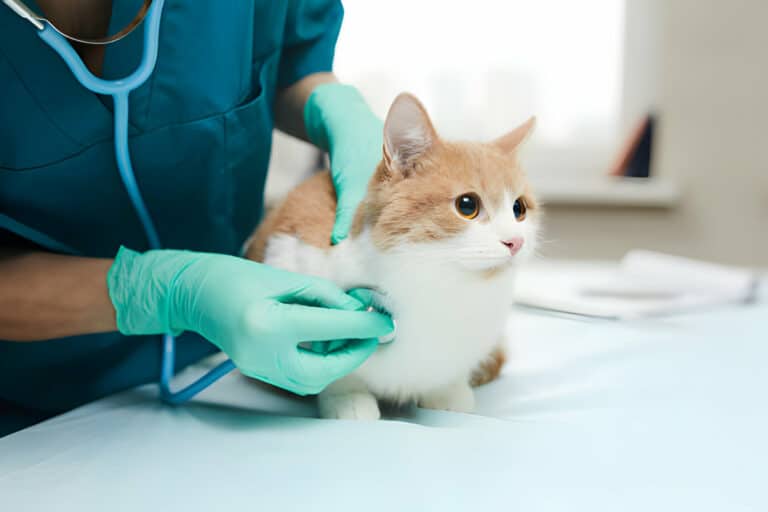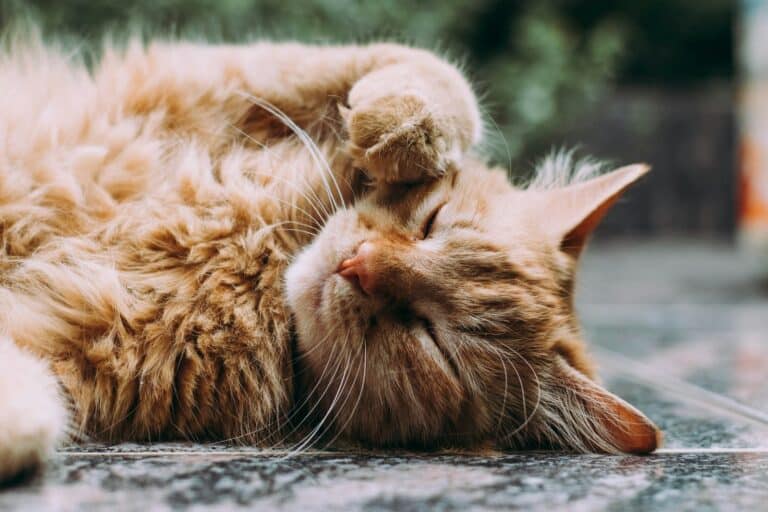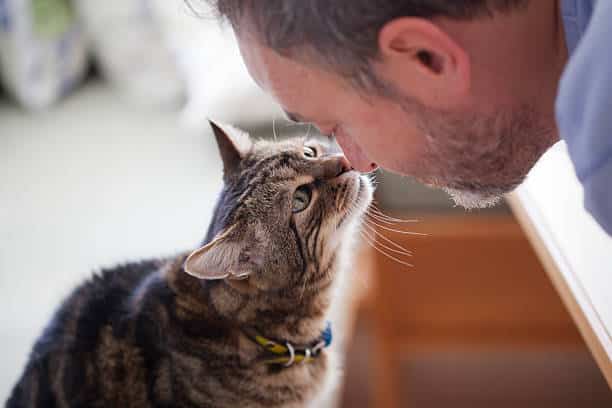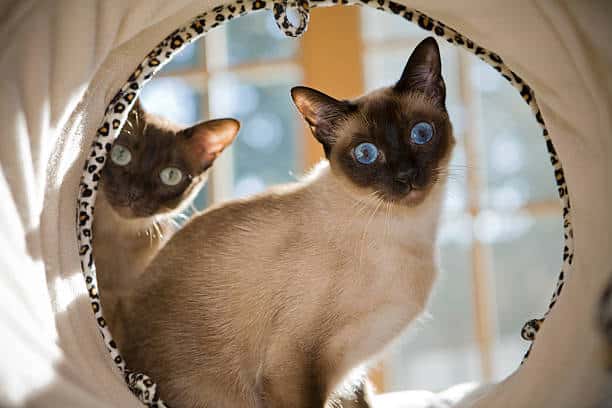Why Isn't My New Cat Eating? Understanding Picky Eaters in a New Home
Ever wondered, ‘Why isn’t my new cat eating?’ It’s a concern many pet owners face, signaling deeper issues tied to their transition. Stay tuned as we uncover the crucial links between a cat’s eating habits and their environment, offering actionable tips to ease your furry friend into their new home.
[ez-toc initial_view=”hide”]
Common Reasons Your New Kitten Might Not Be Eating
Curious about why your new kitten isn’t eating? Dive into the common reasons behind their appetite changes and discover how to help them feel comfortable and nourished.
1. Kitten’s not eating because they’re stressed (maybe due to a new environment or travelling)
Stress from a new environment or recent travel may cause your kitten to lose their appetite, requiring patience and gentle encouragement to resume eating.
2.The Connection Between Environment and Appetite
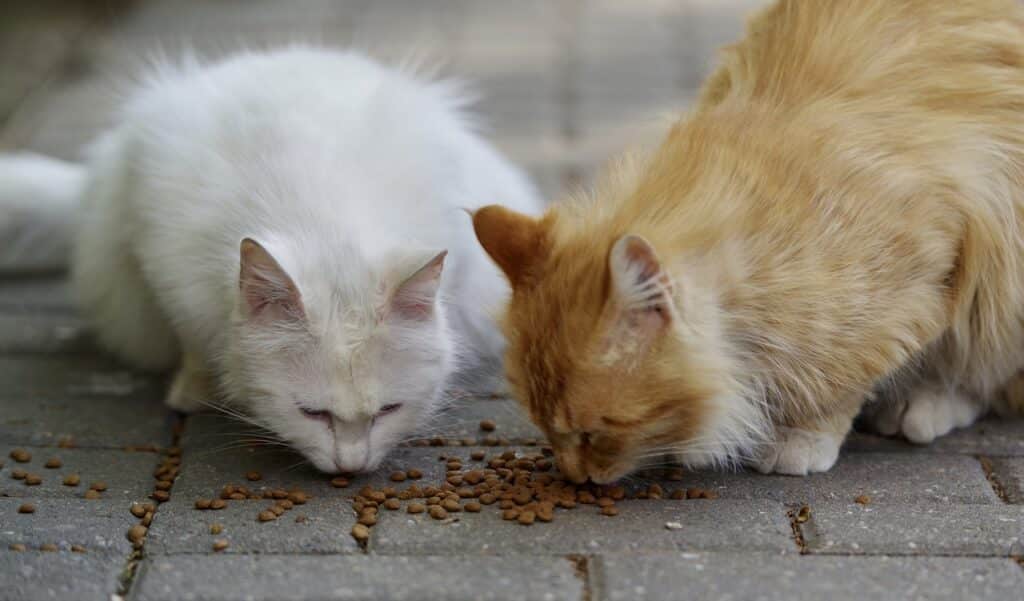
Some cats may experience a temporary loss of appetite when transitioning to a new environment. The stress of moving to an unfamiliar place can lead to anxiety and a decreased interest in food.
3.They don’t like the type of bowl
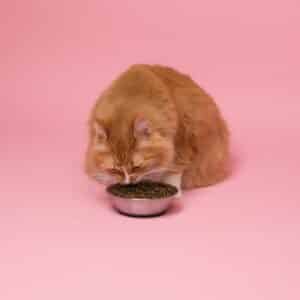
Experimenting with different bowl types can help determine if your kitten has preferences, ensuring they’re comfortable and eager to eat from their designated dish.
4. The location of the bowl isn’t right
Placing the food bowl in a quiet and accessible location can alleviate any anxiety your kitten may have, promoting a stress-free dining experience.
5. The bowl might not be clean enough for fussy kittens
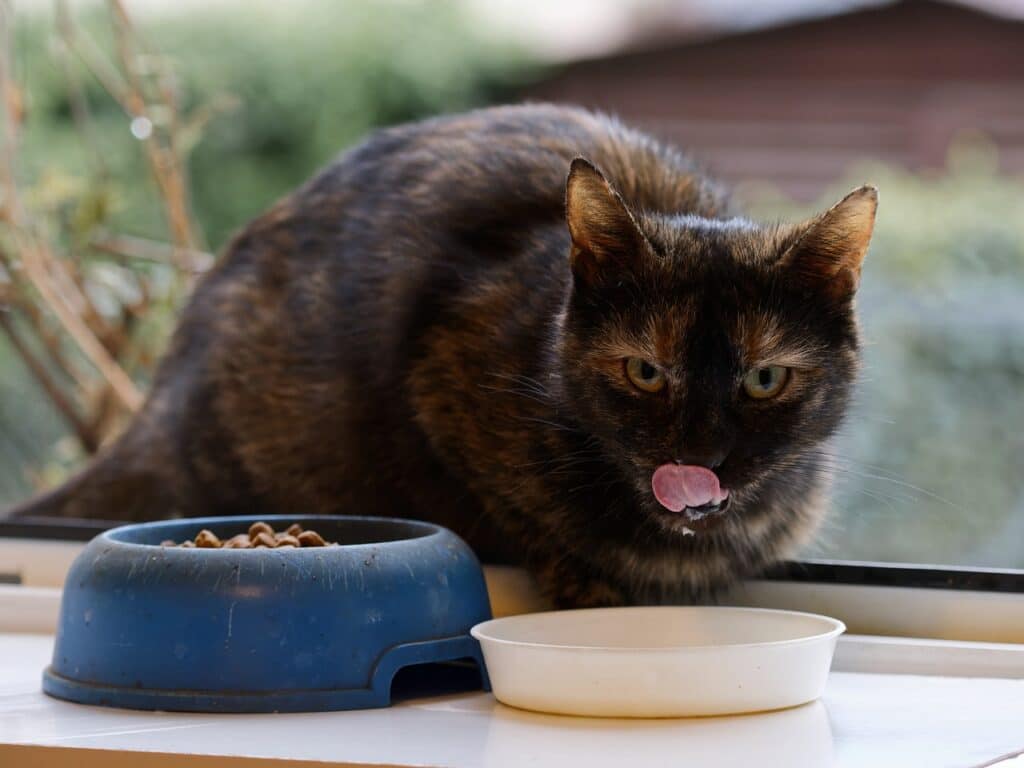
Regularly cleaning the food bowl ensures a hygienic eating environment, reducing the likelihood of aversion and encouraging your kitten to enjoy their meals without hesitation.
6. They have tooth ache
Monitoring your kitten’s oral health is crucial, as dental issues such as toothaches can significantly impact their appetite, necessitating prompt veterinary care to address any discomfort.
7. They Don’t Have a Routine
For many cats, establishing a routine can be beneficial in encouraging regular eating habits. Cats often feel more comfortable and secure when they know what to expect, so feeding them at the same time each day in a quiet, calm environment can help ease their transition and make mealtime more appealing.
8. They may not feel well
A lack of appetite in your kitten could indicate they’re not feeling well, necessitating closer observation and potential veterinary intervention to address any underlying health concerns.
Monitoring for other symptoms of illness alongside decreased appetite can provide valuable insights into your kitten’s well-being, ensuring prompt attention and appropriate care for their recovery.
9. They have already eaten too much!
Overeating may cause temporary loss of appetite in kittens, necessitating a brief break before they resume eating.
What to do when the new kitten is not eating? Tips for Creating a Comfortable Space for New Kitten
- When your new kitten isn’t eating, try offering a variety of food options to entice their appetite and ensure they stay hydrated.
- Create a comfortable and stress-free environment for your new kitten by providing cozy hiding spots, interactive toys, and a quiet feeding area.
- Gradually introduce your kitten to their new surroundings, offering patience and gentle encouragement as they adjust to their new home and routine.
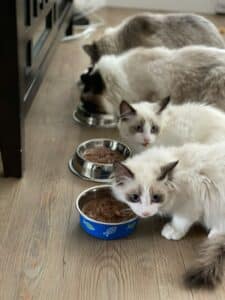
On top of stress, unfamiliar food can also contribute to a cat’s reluctance to eat. To help your new furry friend adjust, create a calm and quiet eating space away from commotion. Assume that providing familiar food or gradually introducing new food mixed with their old food can encourage eating.
The Impact of Change on a Feline’s Eating Behavior
With change often comes resistance, and this can manifest in a cat’s eating habits. Impacting factors include stress from the moving process and the adjustment to new surroundings. It’s important to be patient and understanding during this time of transition.
Respiratory Diseases and Their Effect on Eating Habits
Recognizing Symptoms of Respiratory Issues

The respiratory system plays a crucial role in a cat’s overall health, and any issues in this area can significantly impact their eating habits. Common symptoms of respiratory diseases in cats include coughing, sneezing, nasal discharge, and difficulty breathing. If your cat exhibits any of these signs, it’s important to seek veterinary care promptly to address the underlying issue.
How Respiratory Diseases Can Affect Smell and Taste
The sense of smell is closely linked to a cat’s appetite, and respiratory diseases can impair this important sense. Issues such as congestion and nasal discharge can make it difficult for cats to smell their food, leading to a decreased interest in eating. Additionally, these conditions can affect taste perception, further contributing to a lack of appetite.
Diseases affecting the respiratory system, such as feline upper respiratory infections, can have a profound impact on a cat’s eating habits. These infections are common in shelters and multicat environments, leading to symptoms such as nasal congestion, sneezing, and coughing. Additionally, more severe conditions like pneumonia can cause significant respiratory distress, further hindering a cat’s ability to eat comfortably.
Treatment for Loss of Appetite in Cats
Treatment for loss of appetite in cats involves addressing any underlying medical issues, providing a palatable diet, and creating a stress-free environment to encourage eating.

With the guidance of a veterinarian, treatment options for respiratory diseases in cats may include antibiotic therapy, supportive care to alleviate symptoms, and in some cases, hospitalization for severe cases. It’s necessary to provide a quiet and stress-free environment for your cat to aid in their recovery.
Encouraging hydration and offering soft, palatable foods can also support their nutritional needs while they recover.
Digestive System Issues that Can Cause Loss of Appetite

Common Digestive Disorders in Kitten
Systematic issues within a cat’s digestive system can often lead to a loss of appetite. Common digestive disorders in cats include constipation, diarrhea, and gastroenteritis. These disorders can be caused by a variety of factors such as dietary changes, stress, or underlying health conditions.
Signs Your Cat May Have a Digestive Issue
Signs that your cat may have a digestive issue include vomiting, diarrhea, bloating, and decreased appetite. If your cat exhibits any of these symptoms, it is important to monitor their behavior and consult a veterinarian to rule out any serious conditions.
Digestive problems in cats can be uncomfortable and distressing for your furry friend. It is crucial to stay attentive to any changes in their eating habits or behavior, as these can be indicators of underlying health issues.
Approaches to Treating Digestive Problems
Problems in the digestive system can often be treated through dietary management, medication, and lifestyle changes. Consult your veterinarian for a proper diagnosis and treatment plan tailored to your cat’s specific needs. Ensuring your cat receives proper care and treatment is vital for their overall health and well-being.
The Danger of Foreign Bodies in a Cat’s Diet
Identifying Potential Ingested Foreign Bodies
To ensure the well-being of your new kitten companion, it’s crucial to be aware of the potential dangers of foreign bodies in their diet. To identify if your cat has ingested something they shouldn’t have, keep an eye out for signs such as decreased appetite, vomiting, lethargy, or unusual behavior.

Symptoms and Immediate Actions to Take
Foreign bodies in a cat’s digestive system can lead to serious health issues if not addressed promptly. If you notice symptoms like excessive drooling, gagging, or inability to eat, it’s imperative to seek immediate veterinary attention. These signs could indicate a potential blockage in the gastrointestinal tract, which requires professional intervention.
Foreign bodies, such as hairballs or small objects, can cause discomfort and even life-threatening complications if not properly managed. Ingested foreign bodies may not pass naturally and can lead to obstructions, perforations, or infections in your cat’s digestive system. It’s crucial to act swiftly if you suspect your cat has swallowed something they shouldn’t have.
Preventative Measures to Avoid Ingestion of Foreign Objects
The best approach to safeguarding your cat from ingesting foreign bodies is through proactive prevention. Ensure your home is free of small, potentially hazardous items that your curious pet might swallow. Keep hazardous substances, small toys, and loose strings out of reach to minimize the risk of ingestion.
The ingestion of foreign bodies is a serious issue that can result in emergency situations for your cat. By taking preventive measures and being vigilant about potential risks, you can significantly reduce the chances of your furry friend encountering such dangerous situations.
Dental Disease and Its Impact on Eating
Symptoms of Dental Issues in Cats
To identify potential dental issues in your cat, look out for symptoms such as bad breath, swollen gums, difficulty chewing, pawing at the mouth, and drooling excessively. Cats with dental problems may also show a decrease in appetite and weight loss. Regularly checking your cat’s mouth for any abnormalities can help catch dental issues early.
How Dental Health Affects Appetite
Impact of dental disease on a cat’s appetite can be significant. Cats with dental problems often experience pain while eating, leading to a decreased appetite, refusal to eat hard food, or even weight loss. Proper dental care is crucial for maintaining your cat’s overall health, as undiagnosed dental issues can have detrimental effects on their well-being and quality of life.
Professional Dental Care for Cats
Issues concerning dental care should be addressed by a veterinarian. Regular dental check-ups, cleanings, and potential treatments are crucial for preventing and managing dental disease in cats. Professional dental care not only improves your cat’s oral health but can also have a positive impact on their overall appetite and well-being.
The Role of Stress in a Cat’s Eating Patterns
Identifying Stressors in a New Environment
After welcoming a new furry friend into your home, you may notice that they are not eating as expected. Any change in environment can cause stress in cats, leading to a decreased appetite or picky eating habits. Moving to an unfamiliar place can be overwhelming for cats, causing anxiety and reluctance to eat.
Techniques to Reduce Stress and Encourage Eating
On the other hand, there are various techniques you can use to help your cat adjust and start eating normally again. Cats thrive in a calm and quiet environment, so creating a peaceful eating space away from noise and commotion can help. Additionally, offering familiar food from their previous home or introducing new food gradually can ease their transition.
Long-Term Management of Stress in Cats
Any long-term management of stress in cats involves understanding their individual needs and preferences. Encourage a routine that includes regular mealtimes, play, and rest to help establish a sense of security and predictability for your feline companion. Providing enrichment activities and safe spaces for your cat to relax can also contribute to reducing their stress levels in the long run.
Preferences and Picky Eating: Food Flavor, Shape, and Texture
Understanding Cats’ Taste Preferences
The taste preferences of cats can vary greatly from one feline to another. Some cats may prefer fish flavors, while others may enjoy poultry or beef. It’s imperative to observe your cat’s reactions to different flavors of food to understand their preferences and provide them with meals that they will enjoy.
Selecting the Right Food Shape and Texture
To cater to your cat’s preferences when it comes to food shape and texture, consider factors like size and crunchiness. Some cats may prefer smaller, bite-sized kibbles, while others may enjoy larger pieces. Experiment with different textures, such as tender morsels or crunchy bits, to find what your cat prefers.
For instance, some cats may be more inclined to eat food with irregular shapes that mimic prey. Selecting food with different shapes and textures allows you to keep mealtime interesting for your picky eater and ensures they are getting the nutrients they need.
Introducing New Flavors to Picky Eaters
Shape can also play a role in introducing new flavors to picky eaters. Mixing familiar flavors with new ones in varied shapes and textures can entice your cat to try something different. Gradually introducing new flavors can help prevent mealtime boredom and encourage your cat to expand their palate.
Selecting a variety of flavors and textures in your cat’s diet can keep mealtime exciting and enjoyable for your picky eater. Observing your cat’s reactions and preferences will guide you in providing a well-balanced diet that meets their individual tastes and needs.
Spoiled Food and Poor Eating Habits
Recognizing Signs of Food Spoilage
Food spoilage can happen more frequently than we realize, especially with picky eaters. Signs to look out for include changes in color, texture, or smell of the food. If your cat shows disinterest in their food, it might be a sign it has gone bad. Mold, insects, or an off-putting odor are clear indicators that the food should be discarded immediately.
Proper Food Storage Techniques
Any cat owner knows the importance of proper food storage to prevent spoilage. Store dry food in an airtight container in a cool, dry place away from sunlight. For wet food, keep it refrigerated and covered to maintain freshness. Always check the expiration dates on packaging and rotate stock to ensure you’re feeding your cat fresh, nutritious meals.
When transitioning your cat to fresh, nutritious food, it’s crucial to incorporate gradual changes to their diet. Start by mixing small amounts of the new food with their old food and slowly increase the ratio over several days. This will allow your cat’s digestive system to adjust to the new food without causing any digestive upsets.
Additional Tips for Encouraging Your Cat to Eat
All new cat owners may face the challenge of getting their feline friend to eat when adjusting to a new environment. Understanding the potential reasons behind their picky eating can help in finding solutions. Recognizing signs of stress, unfamiliar food, motion sickness, or underlying health issues is key to addressing the issue effectively.
Using Appetite Stimulants and Supplements
Encouraging your cat to eat may sometimes require the use of appetite stimulants or supplements. These can help stimulate their appetite and ensure they are getting the necessary nutrients, especially during stressful periods. Consulting with your veterinarian before trying any new supplements is recommended to ensure they are safe and effective for your cat’s specific needs.
When to Consult a Veterinarian
One key factor to keep in mind is knowing when it’s time to seek professional help. If your cat continues to refuse food for more than 24 hours, exhibits concerning symptoms, or shows persistent picky eating habits, it’s vital to consult a veterinarian. They can rule out any underlying health issues and provide personalized advice on how to best support your cat’s nutritional needs. Feeding your new cat may require patience and understanding, but by implementing these additional tips and strategies, you can help your furry friend adjust and thrive in their new home.
Monitoring Your Cat’s Health and Diet
Keeping Track of Weight and Appetite
Now that your new cat is settling into their new home, it’s important to monitor their weight and appetite closely. Cats can be quite stealthy when it comes to hiding signs of illness, so regular monitoring is key. Keep an eye on their food intake and weight to ensure they are maintaining a healthy balance.
Regular Vet Check-ups for Dietary Concerns
Cats are known for masking any health issues they may have, especially when it comes to their diet. Keeping up with regular vet check-ups can help catch any dietary concerns early on. Routine visits allow your vet to assess your cat’s overall health and provide guidance on nutrition and feeding habits tailored to your furry friend’s needs.
It’s recommended to schedule a vet appointment if your cat continues to refuse food for more than 24 hours or shows other concerning symptoms like lethargy or vomiting.
Knowing When Changes in Eating Habits Are Serious
Dietary changes in cats can sometimes indicate underlying health issues. If your cat’s eating habits change drastically or persist over an extended period, it’s vital to consult your vet. They can conduct a thorough examination to rule out any health concerns and provide appropriate treatment if needed.
Plus, remember that most new cats adjust within a few days and get back to their regular eating habits. However, if you notice any abnormal eating patterns, it’s always better to err on the side of caution and seek professional advice.
Professional Treatment for Loss of Appetite in Cats
Vitamin B12 and Other Supplements
Appetite loss in cats can sometimes be a sign of nutrient deficiencies, especially in a new environment. Supplementing your cat’s diet with imperative nutrients like Vitamin B12 can help boost their appetite and overall health. Consult with your veterinarian to determine the right supplements for your cat’s specific needs.
Prescription Diets and Medications
Professional guidance from a veterinarian may lead to the recommendation of prescription diets or medications to address your cat’s loss of appetite. These specialized diets or medications are formulated to provide necessary nutrients and encourage eating. They can be helpful in resolving persistent appetite issues in cats. Always follow your veterinarian’s instructions carefully when implementing prescription treatments.
Supportive Therapies for Recovery
Professional support may also include additional therapeutic options such as supportive therapies to aid in your cat’s recovery from appetite loss. These therapies can include methods like appetite stimulants or behavioral modifications to encourage eating. Your veterinarian can provide guidance on the best approach for your cat’s individual needs.
Understanding
Seeking professional treatment for your cat’s loss of appetite is imperative to identify and address any underlying health issues that may be causing the problem. Veterinary guidance and specialized treatments can help your cat return to their normal eating habits and overall well-being. Be proactive in seeking professional help if your cat’s appetite issues persist or worsen.
Preventive Measures for Maintaining a Healthy Appetite
Regular Deworming and Parasite Control
Many new cat owners may not realize that parasites can significantly impact a cat’s appetite. Any cat, especially those coming from unknown origins, should be given regular deworming treatment to ensure they are free from internal parasites that could be affecting their appetite.
Importance of Clean and Fresh Water
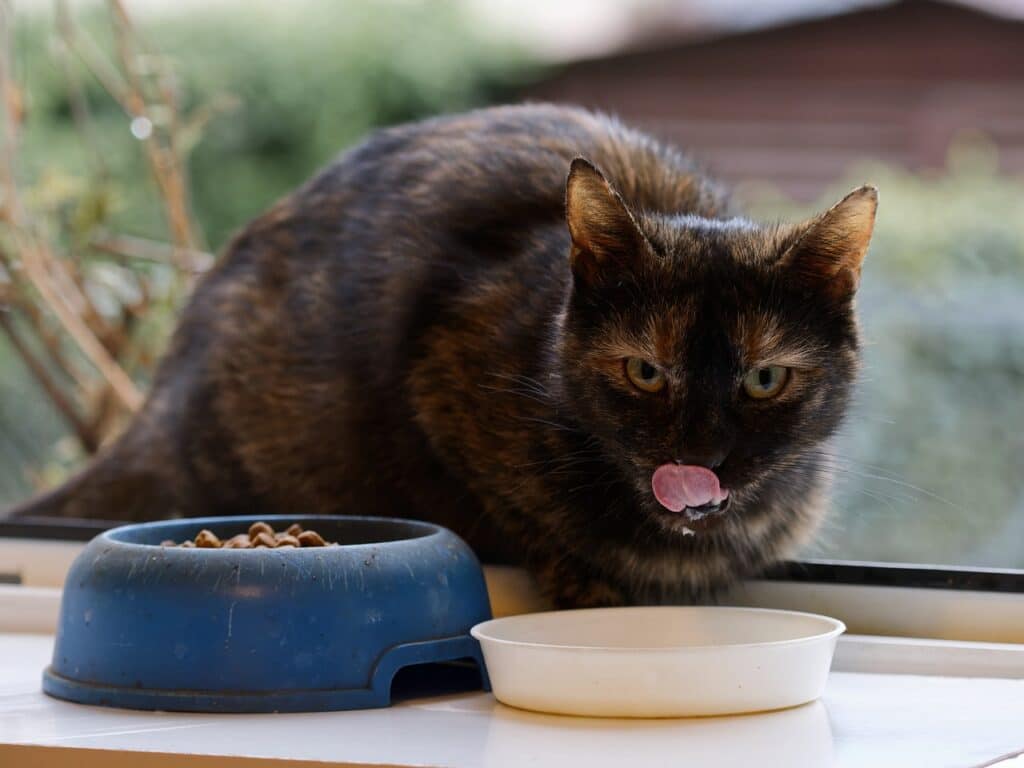
Water is crucial for a cat’s overall health and can play a crucial role in their eating habits. Plus, hydration is vital for proper digestion and nutrient absorption. Make sure your cat always has access to clean and fresh water to encourage them to stay hydrated and maintain a healthy appetite.
Establishing a Consistent Feeding Schedule
Schedule is key in helping your new cat adjust to their new routine. Another important factor is to establish a consistent feeding schedule. Cats thrive on routine, so feeding them at the same time every day can help regulate their appetite and create a sense of stability in their new environment.
Engaging with the Cat Community for Support
Benefits of Online Forums and Groups
Benefits of engaging with online forums and groups for cat owners experiencing their feline friend’s loss of appetite include obtaining valuable advice and support from a community that understands the challenges of welcoming a new cat into the home. These platforms provide a space to share experiences, ask questions, and receive guidance from seasoned cat owners and experts in the field.
Sharing Experiences with Other Cat Owners
Any new cat owner facing their furry friend’s picky eating habits can benefit from sharing their experiences with other cat owners. By exchanging stories and insights, individuals can gain reassurance and alternative strategies to help their cats adjust to their new environment. Connecting with others who have gone through similar situations can provide comfort and practical solutions in overcoming feeding challenges.
Another way to engage with the cat community for support is by finding additional resources for cat care. From informative websites to local pet stores offering advice, utilizing a variety of resources can provide cat owners with a wealth of knowledge and solutions specific to their cat’s needs. Sharing and learning from various sources can help in understanding the underlying reasons for a cat’s loss of appetite and finding suitable solutions to address the issue.
From above To wrap up
Understanding why your new cat isn’t eating can alleviate your worries and help you support their adjustment to their new home.
Stress, unfamiliar food, or even motion sickness can all be contributing factors to their picky eating behavior.
By offering familiar food, gradually introducing new food, creating a calm eating environment, and exploring different food options, you can encourage your cat to start eating again.
Most cats will settle in and resume their normal eating habits within a few days, but if concerns persist, it’s important to seek guidance from a veterinarian to rule out any underlying health issues. With patience and understanding, you can help your new furry friend feel more comfortable and content in their new environment.
FAQ
Q: Why is my new cat not eating?
A: There can be a few reasons why your new cat is not eating, such as stress from a new environment, unfamiliar food, illness, or dental issues.
Q: Should I be worried if my kitten is not eating?
A: It’s very important to monitor your kitten’s food intake closely, as kittens have higher energy needs and not eating could lead to health issues.
Q: How can I encourage my cat to eat dry food?
A: To encourage your cat to eat dry food, you can try mixing it with wet food, warming it up slightly, or offering a variety of textures and flavors.
Q: What should I do if my cat is not using the litter box?
A: If your cat is not using the litter box, try placing it in a quiet and accessible location, ensuring it’s clean, and using a litter type your cat prefers.
Q: Can vaccination cause a cat to stop eating?
A: Vaccination can sometimes cause temporary side effects like loss of appetite, so monitor your cat closely after vaccination and consult your vet if it persists.
Q: Is it normal for a cat to stop eating when moving to a new home?
A: Yes, it’s normal for a cat to stop eating when adjusting to a new environment due to stress or anxiety. Give your cat time to acclimate and offer familiar food and water.
Q: What are the common causes and solutions for a cat not eating?
A: Common causes for a cat not eating include stress, illness, dental problems, or food preferences. Solutions may involve consulting a vet, offering a variety of foods, or addressing environmental stressors.
How long will a new cat not eat for?
A new cat may not eat for up to 24-48 hours as they adjust to their new environment.
Is it normal for cats to not eat when you first get them?
It’s common for cats to not eat when first brought home due to stress and unfamiliarity.
How can I get my new cat to eat?
To encourage your new cat to eat, offer a variety of foods, create a quiet feeding area, and establish a consistent feeding schedule.
How long does it take for a cat to start eating again?
Typically, a cat will start eating again within 24-48 hours once they feel comfortable and settled in their new home.



